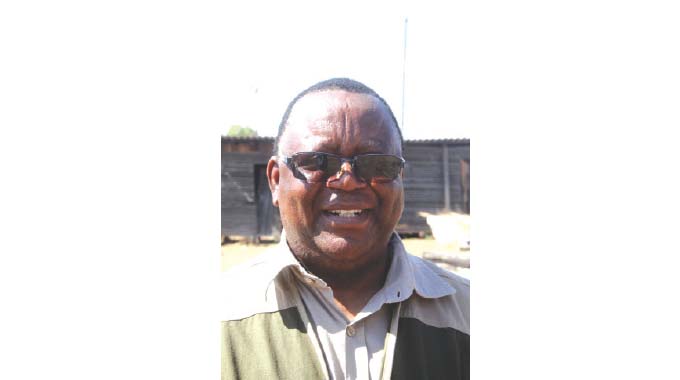Charcoal threat to our forests

Sukulwenkosi Dube-Matutu, Chronicle Reporter
THE use of charcoal as an alternative source of energy is on the increase with environmentalists raising concern that the practice will, if not curbed, become a major contributor to deforestation in the country.
There is now a general preference for charcoal for cooking instead of firewood as it is less costly.
Some of the charcoal is imported from Mozambique and Zambia while some of it is produced illegally in the country.
In Victoria Falls and Hwange, a 50kg bag of charcoal costs US$5 while in Bulawayo charcoal sold in a 20-litre bucket costs US$3.
Mrs Lucy Ncube from Bulawayo said charcoal was less expensive compared to firewood. She said she could use a small portion of charcoal to cook and it was also reusable.
“I prefer using charcoal instead of firewood as it has a lot of advantages. A 20-litre bucket of charcoal costs US$3 while five small thin logs of firewood cost US$1. I would only use the firewood to cook one meal and it will be finished. When it comes to charcoal, I will take a small portion and use it to cook a meal and after I’m done, I can switch it off and use the same portion of charcoal again,” she said.
“Charcoal lasts longer than firewood and it’s cheaper. The smaller the container you use to cook the little charcoal required. Electricity is very expensive and charcoal is really a good alternative source of energy as it’s cheap. In Bulawayo, we experience load shedding which requires us to have an alternative source of energy. Gas is expensive and firewood is also expensive.”
Mrs Fellunah Mswere said cooking with charcoal does not require a lot of labour compared to firewood. She said using firewood requires constant monitoring but with charcoal, once ignited, no other effort is required.
In Bulawayo most of the charcoal comes from Hwange and Victoria Falls. There are also some communities in the rural areas such as Nyamandlovu and Nkayi which have taken up charcoal production at a small scale to supply Bulawayo.
Mr Innocent Nyathi from Nyamandlovu said he usually uses mopane trees to make the charcoal.
He said he then packs the charcoal in 20kg bags and transports it to Bulawayo where he sells it in Cowdray Park suburb for US$3 for a 20-litre bucket.
Mr Nyathi said he could not sell it daily as producing charcoal takes time.
“I cut down mopane trees then I cover the logs with mud and leave space to set the fire. I sometimes dig up a pit and place my logs inside and cover with mud on top. I then burn the logs overnight. The fire dies on its own and at that time the charcoal will be ready. I allow the charcoal to cool off and then I remove the mud and I pack my charcoal which will be ready for sale,” he said.
“I saw a viable business opportunity and that’s why I started producing and selling charcoal. My fellow villagers also buy the charcoal from me in bulk and they also sell it. Charcoal is less costly and easier to move compared to firewood. Recently, it has been difficult to sell the charcoal because of the blitz that was launched by Forestry Commission but we try to evade them.”
Forestry Commission general manager, Mr Abedinico Marufu said four tonnes of freshly cut firewood were required to produce just one tonne of charcoal. He said the major hotspots for charcoal production were Hwange and Victoria Falls in Matabeland North, Mhondoro and Beatrice in Mashonaland West as well as Muzarabani in Mashonaland Central.
“There is also a lot of charcoal moving from Hwange and Victoria Falls to Bulawayo.
People are generally saying charcoal is more efficient but it causes a lot of damage to our forests. Movement and use of charcoal are steadily growing and if not contained it will be a major cause of deforestation. In order to make charcoal, a lot of firewood is needed. Four tonnes of freshly cut firewood is required to produce just one tonne of charcoal which just shows the extent of damage to the ecosystem,” he said.
“Some of the charcoal is imported from Zambia or Mozambique while some of it is illegally produced locally. The major hotspots for charcoal are Hwange, Victoria Falls, Mondoro, Beatrice and Muzarabani. In Hwange and Victoria Falls most of the charcoal comes in from Zambia. We have cases where mopane trees are cut in Muzarabani and they are illegally transported into Mozambique where charcoal is produced and later brought into the country.”
Mr Marufu said they had put in place strategies to contain cutting of firewood and movement of firewood and charcoal. He said while in some countries charcoal production was a legal trade, in Zimbabwe it was illegal.
To stop the illicit trade in charcoal and fuel wood, the country has launched a nationwide blitz spearheaded by the Forestry Commission with support from the Ministry of Environment, Climate, Tourism and Hospitality Industry, Environmental Management Agency, Zimbabwe Parks and Wildlife Management Authority (Zimparks), the police, local authorities and the Ministry of Lands, Agriculture, Fisheries, Water and Rural Resettlement.
Zimbabwe loses about 262 000 hectares of forests annually, according to the Forestry Commission.
Reliance on charcoal or firewood is highest in Africa and Asia, according to a 2018 report by the UN Food and Agriculture Organisation, with some African cities almost entirely dependent on charcoal for cooking.
Africa’s illegal charcoal trade is decimating fragile forest cover, raising huge environmental concerns over its sustainability. Experts say charcoal making is increasing the loss of indigenous forests as well as land degradation.
In 2020, more than 30 people were arrested and fined for trading in charcoal with 1,9 tonnes of charcoal confiscated. — @DubeMatutu











Comments